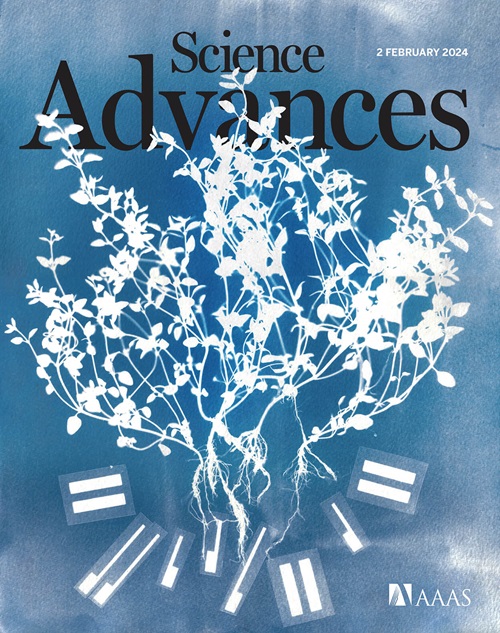Gradual labeling with fluorogenic probes: A general method for MINFLUX imaging and tracking
IF 11.7
1区 综合性期刊
Q1 MULTIDISCIPLINARY SCIENCES
引用次数: 0
Abstract
Minimal photon fluxes (MINFLUX) nanoscopy excels in nanoscale protein studies but lacks a universal method for simultaneous imaging and live-cell tracking in dense cellular environments. Here, we developed a general strategy, gradual labeling with fluorogenic probes for MINFLUX (GLF-MINFLUX) imaging and tracking. In GLF-MINFLUX, membrane-permeable small-molecule fluorogenic dye with protein-induced “off/on” switching is gradually labeled, located, and bleached, enabling sequential positioning and tracking of individual proteins. GLF-MINFLUX reveals continuous microtubules with 2.6-nanometer localization precision, offering substantially improved precision (1.7-fold), acquisition (2.2-fold), and target density (3-fold) compared to conventional MINFLUX with Alexa Fluor 647. GLF-MINFLUX also enabled the three-dimensional localization of translocase of the outer mitochondrial membrane 20 proteins within mitochondrial clusters and dual-channel nanoscale imaging of endogenous neuronal microtubules and microfilaments. GLF-MINFLUX allowed live-cell single-protein tracking with 7.8-nanometer precision at ~200-microsecond temporal resolution, revealing distinct diffusion behaviors and rates between the basal membrane and filopodia. GLF-MINFLUX, requiring only tuning of probe concentration, offers molecular-level insights into protein functions.
用荧光探针逐渐标记:MINFLUX成像和跟踪的一般方法
最小光子通量(MINFLUX)纳米显微镜在纳米级蛋白质研究中表现优异,但缺乏在密集细胞环境中同时成像和活细胞跟踪的通用方法。在这里,我们制定了一种通用策略,用荧光探针逐渐标记MINFLUX (GLF-MINFLUX)成像和跟踪。在GLF-MINFLUX中,具有蛋白质诱导的“关/开”开关的膜渗透小分子荧光染料被逐渐标记、定位和漂白,从而实现对单个蛋白质的顺序定位和跟踪。GLF-MINFLUX显示出具有2.6纳米定位精度的连续微管,与Alexa Fluor 647的传统MINFLUX相比,具有显著提高的精度(1.7倍),采集(2.2倍)和目标密度(3倍)。GLF-MINFLUX还实现了线粒体团簇内线粒体外膜转位酶20蛋白的三维定位,以及内源性神经元微管和微丝的双通道纳米成像。GLF-MINFLUX可以在约200微秒的时间分辨率下以7.8纳米的精度跟踪活细胞单蛋白,揭示基底膜和丝状伪足之间不同的扩散行为和速率。GLF-MINFLUX只需要调整探针浓度,就可以在分子水平上深入了解蛋白质的功能。
本文章由计算机程序翻译,如有差异,请以英文原文为准。
求助全文
约1分钟内获得全文
求助全文
来源期刊

Science Advances
综合性期刊-综合性期刊
CiteScore
21.40
自引率
1.50%
发文量
1937
审稿时长
29 weeks
期刊介绍:
Science Advances, an open-access journal by AAAS, publishes impactful research in diverse scientific areas. It aims for fair, fast, and expert peer review, providing freely accessible research to readers. Led by distinguished scientists, the journal supports AAAS's mission by extending Science magazine's capacity to identify and promote significant advances. Evolving digital publishing technologies play a crucial role in advancing AAAS's global mission for science communication and benefitting humankind.
 求助内容:
求助内容: 应助结果提醒方式:
应助结果提醒方式:


